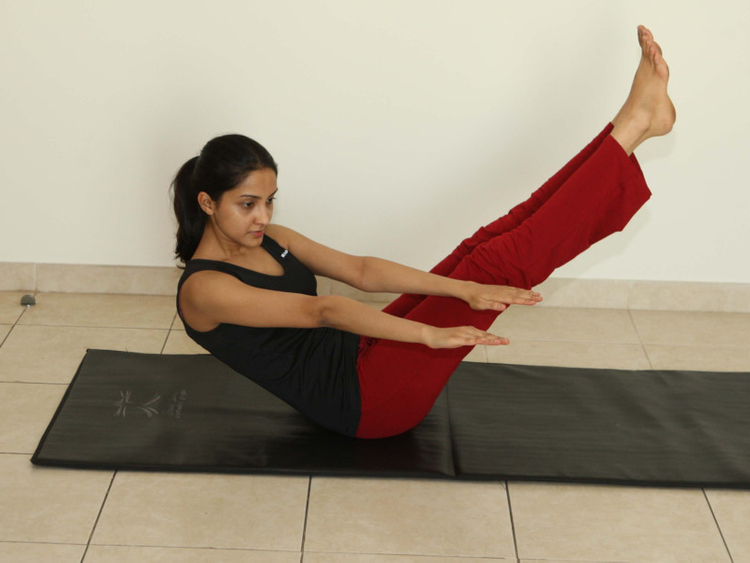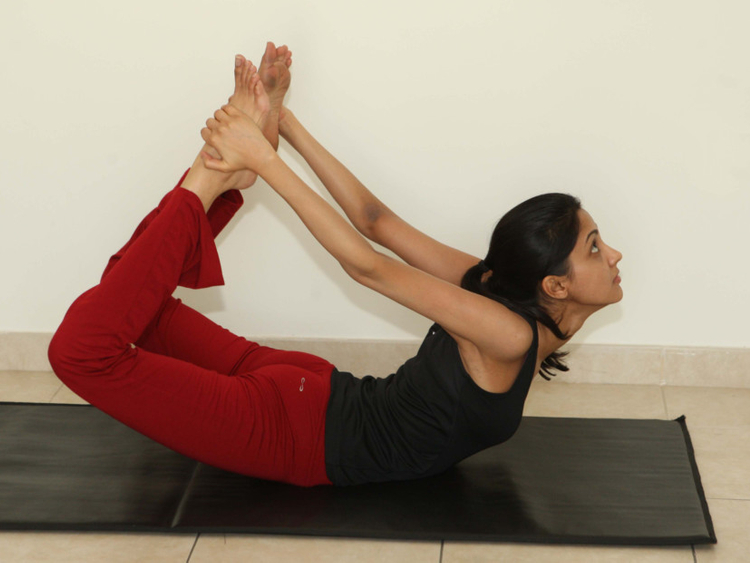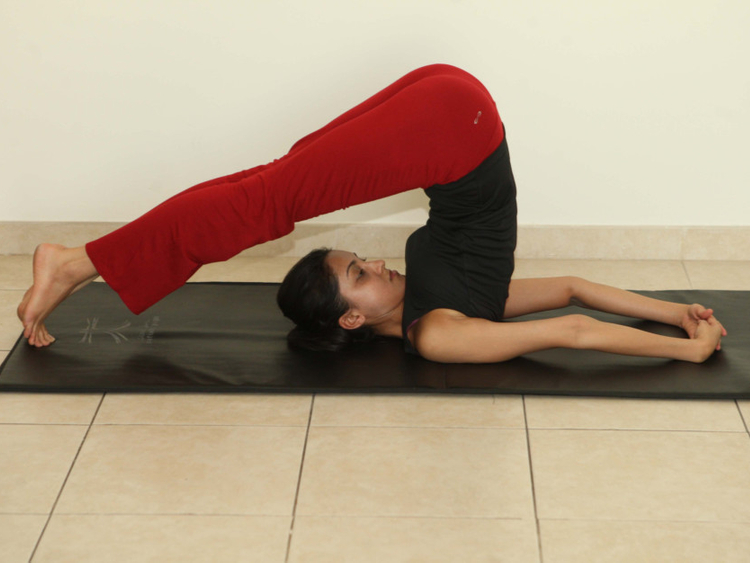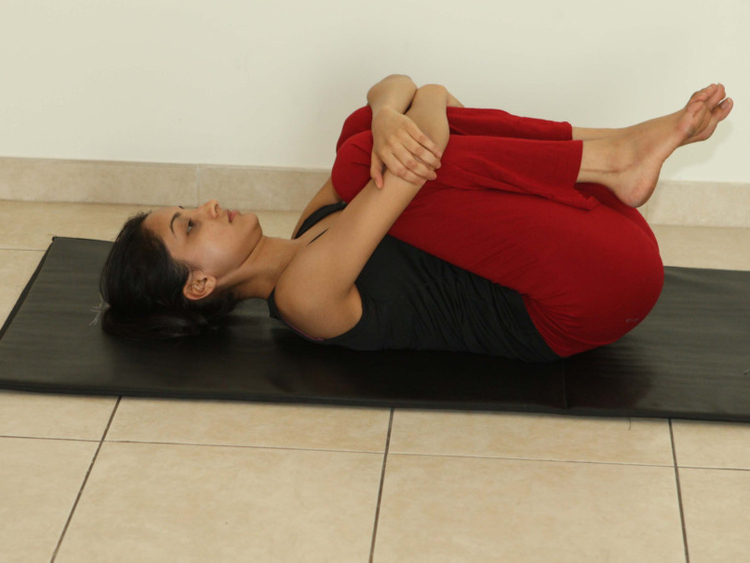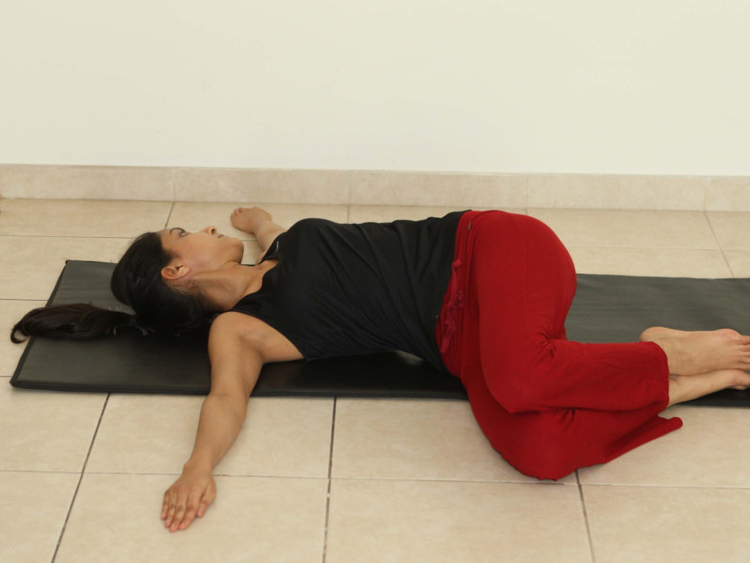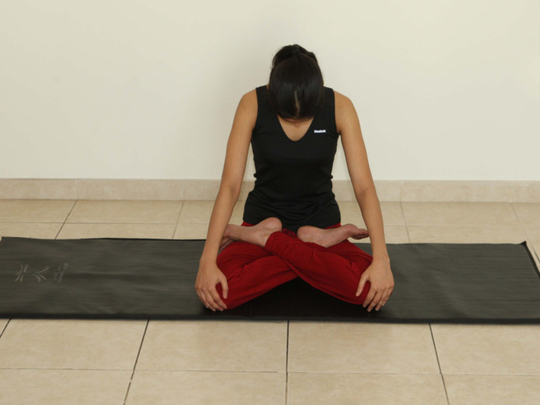
This practice is called uddiyana bandha because it’s a physical lock that causes the diaphragm to rise towards the chest. The Sanskrit word ‘uddiyana’ means to rise or to fly upward. The Sanskrit word ‘bandha’ means to hold, tighten or lock. Uddiyana bandha is, therefore, an abdominal lift.
During uddiyana bandha, negative pressure is created in the thorax causing the blood in the abdominal veins to be sucked into the heart. Simultaneously, fresh arterial blood is drawn into the internal organs, peristalsis is stimulated, and the internal organs — including the heart — are mechanically massaged. A mechanical stimulation of the autonomic nerve fibres and their plexuses also occurs. Systematic practice strengthens the inspiratory muscles and increases the mobility of the diaphragm, the most important respiratory muscle.
How to do it
- Sit in padmasana or vajrasana with the spine erect and the knees in contact with the floor. Use a cushion to raise the buttocks in order to lower the knees.
- Place the palms flat on the knees. Close the eyes and relax the whole body.
- Breathe in deeply through the nostrils. Exhale through the mouth (making the sound ‘whoosh’), emptying the lungs as much as possible.
- Do not breathe in again.
- Raise the shoulders straightening the elbows while pressing the knees down with the palms. This allows further extension of the spinal cord.
- Contract the abdominal muscles inward and upward, and hold without breathing in for as long as you can, without straining.
- Release the abdominal lock, bend the elbows and lower the shoulders. Raise the head and then, slowly, inhale.
- Remain in this position until breathing returns to normal. Then begin the next round. Practise three rounds holding for 10-20 seconds each. Slowly increase to six rounds over a period of two-three months.
Benefits
Uddiyana bandha is the panacea for many abdominal ailments, including indigestion, worms and diabetes, provided they are not chronic. The digestive fire is stimulated and the abdominal organs are massaged and toned. The adrenal glands are balanced, getting rid of lethargy and soothing anxiety and stress. Uddiyana bandha also stimulates the solar plexus which has many subtle influences on the distribution of energy throughout the body.
Keep in mind
- Persons suffering from colitis, stomach or intestinal ulcer, diaphragmatic hernia, high blood pressure, heart disease, glaucoma and raised intracranial pressure should not perform this. It should also be avoided by pregnant women.
- Uddiyana bandha is an advanced technique and should be attempted only under guidance, after attaining some proficiency in breath retention.
- The benefits of regular practice of bandhas are optimum when all three (jalandhar, uddiyana and moolbandha) are practised every day. I will explain the jalandhar (throat lock) and moolbandh (root lock) in the next article.
Practice of the week
Begin with a set of 10-12 sun salutations, followed by the postures listed below before practising uddiyana bandha.
Paripurna Navasana
Paripurna Navasana – I
Dhanurasana
Halasana
Pawanmuktasana
Supta udarakarshanasana
Uddiyana Bandha
Next week: Bandhas for endocrinal health




